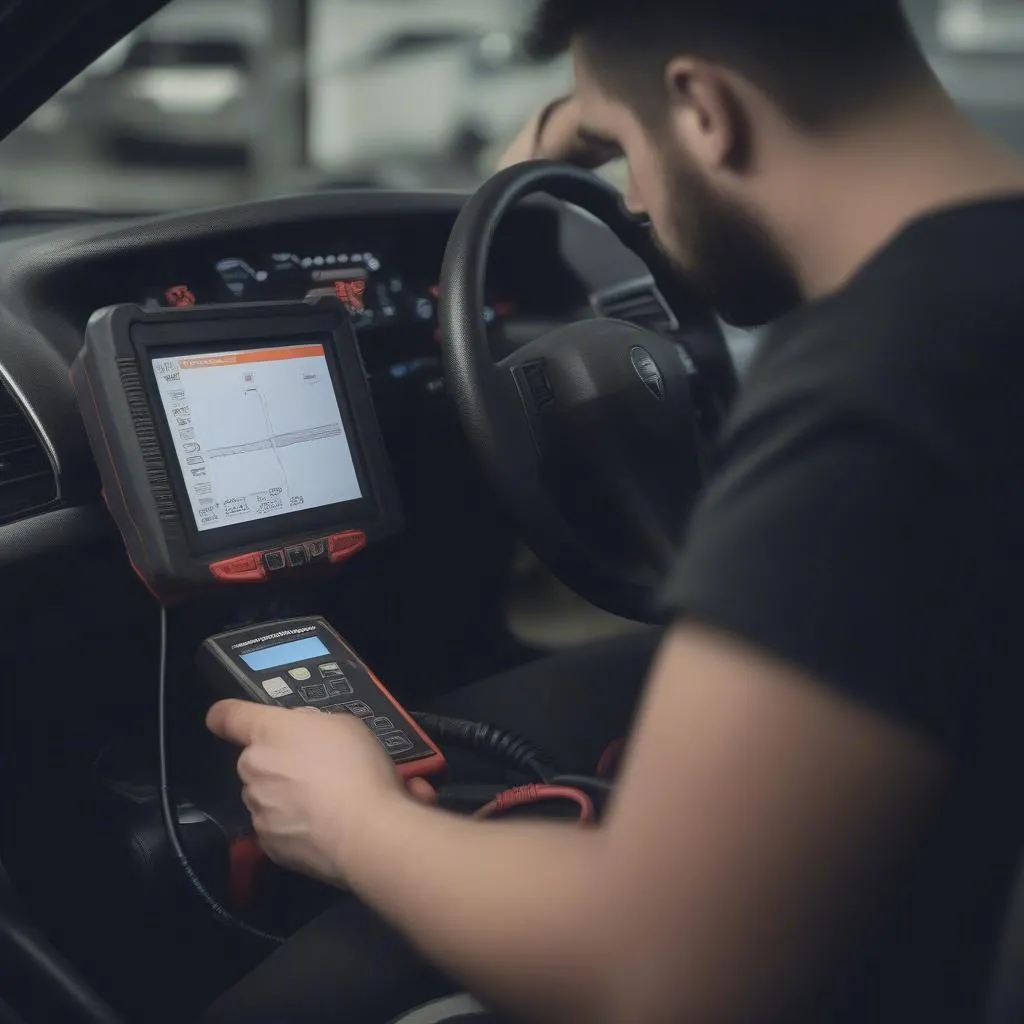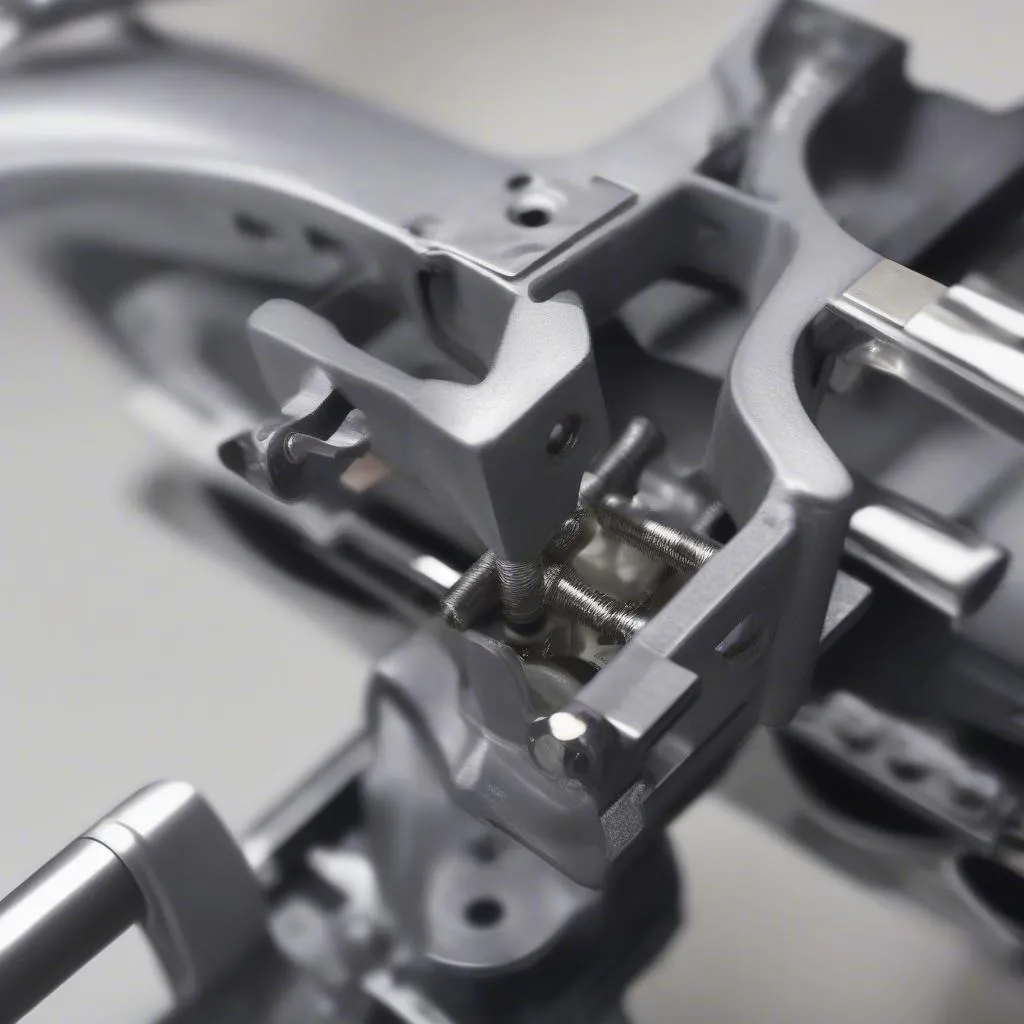Is your Mercedes-Benz ML (W163) throwing up a Christmas tree of warning lights on the dashboard? Specifically, are the BAS (Brake Assist System), ESP (Electronic Stability Program), ETS (Electronic Traction System), and ABS (Anti-lock Braking System) lights all glowing ominously? Don’t panic! This is a common issue on these models, and with a little troubleshooting, you can often fix it yourself.
Understanding the Problem: Why Are These Lights On?
The BAS, ESP, ETS, and ABS systems on your Mercedes-Benz ML are interconnected. They rely on a network of sensors to monitor wheel speed, steering angle, and brake pressure to help you maintain control of your vehicle in slippery conditions or during emergency maneuvers. When one or more of these sensors malfunctions, it can trigger a chain reaction, causing the entire system to shut down and illuminating those warning lights on your dashboard.
“The most common culprit for these warning lights is a faulty ABS wheel speed sensor,” says automotive expert John Smith, author of “The Complete Guide to Mercedes-Benz Repair.” “These sensors are exposed to the elements and can become damaged over time.”
Recognizing the Symptoms: Is it More Than Just Lights?
While illuminated warning lights are the most obvious symptom, you might also experience:
- ABS activation at inappropriate times: For instance, the ABS might engage when you’re driving straight at low speeds.
- Longer stopping distances: A malfunctioning ABS system may not engage when needed, leading to increased braking distances.
- Reduced engine power: Your vehicle’s computer might reduce engine power to prevent wheel slippage as a safety measure.
Essential Tools: What You’ll Need for the Job
Before diving into the repair, gather the following:
- OBD-II Scanner: This will help you read and clear any fault codes stored in your vehicle’s computer.
- Replacement ABS Wheel Speed Sensor(s): It’s advisable to replace all four sensors at once to ensure consistent performance.
- Basic Hand Tools: Socket set, wrenches, screwdrivers.
- Multimeter (optional): To test the electrical continuity of the ABS sensors.
Fixing the Issue: A Step-by-Step Guide
- Read the Fault Codes: Connect your OBD-II scanner to the diagnostic port under your dashboard and read any stored fault codes. Make a note of the codes as they will guide your repair.
- Identify the Faulty Sensor: The fault codes will often pinpoint the problematic ABS sensor. If not, visually inspect all four sensors for damage or corrosion.
- Replace the Sensor(s): Disconnect the electrical connector and remove the faulty sensor. Install the new sensor, ensuring it’s properly seated.
- Clear the Codes: After replacing the sensor(s), use your OBD-II scanner to clear the fault codes.
- Test Drive: Take your Mercedes-Benz ML for a test drive to ensure the warning lights are off and the systems are functioning correctly.
 ABS Wheel Speed Sensor
ABS Wheel Speed Sensor
FAQs: Answering Your Questions
Q: Can I drive my car with the BAS/ESP/ETS/ABS lights on?
A: While you might be able to drive, it’s highly discouraged. These systems are crucial for your safety. Driving with a malfunctioning system could increase the risk of an accident.
Q: What if replacing the sensors doesn’t solve the problem?
A: Other possible culprits include a faulty ABS control module, wiring issues, or a problem with the brake master cylinder. In such cases, it’s best to consult a qualified mechanic or a Mercedes-Benz specialist.
Q: Are there any preventative measures I can take?
A: Regularly inspecting your ABS sensors for damage and cleaning them can help prevent premature failure. Consider having your braking system inspected by a professional mechanic annually.
Q: Can Cardiagtech’s diagnostic tools be used to identify and clear these fault codes?
A: Yes, CARDIAGTECH offers a range of professional automotive diagnostic tools that can effectively identify and clear fault codes in your Mercedes-Benz ML. Their user-friendly software and comprehensive database make diagnosing and troubleshooting BAS/ESP/ETS/ABS issues easier and more efficient. You can explore CARDIAGTECH’s range of products on their website at https://cardiagtech.com/.
 Car Diagnostic Tool
Car Diagnostic Tool
Conclusion
Dealing with BAS/ESP/ETS/ABS issues in your Mercedes-Benz ML can be frustrating, but by following the troubleshooting steps outlined in this guide, you can often resolve the problem yourself. Remember, regular maintenance and timely repairs are key to keeping your vehicle running smoothly and ensuring your safety on the road.

